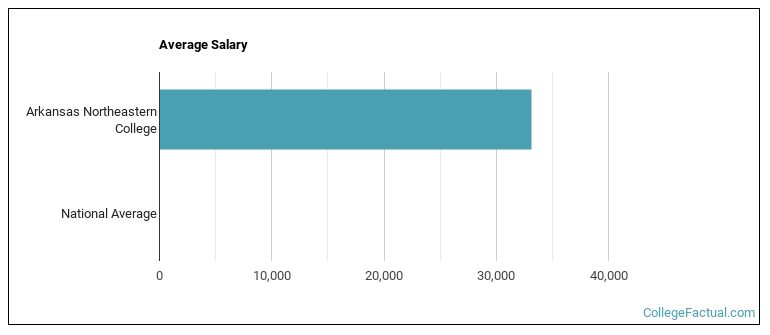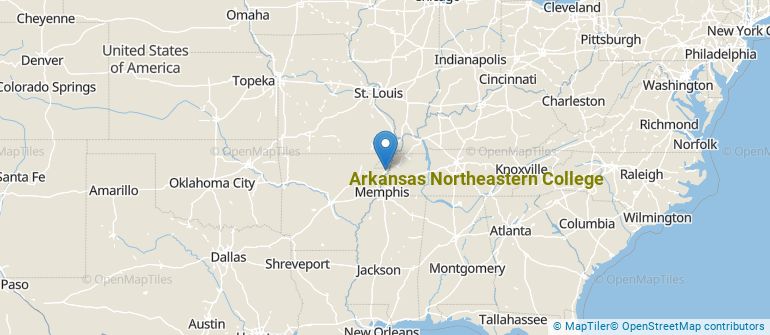 by our College Data Analytics Team
by our College Data Analytics TeamCollege Factual recognizes the best colleges and universities in its annual rankings. These rankings include categories for best overall colleges, best colleges for each major, best value schools, and much more.
Arkansas Northeastern College was awarded 18 badges in the 2025 rankings. The highest ranked major at the school is health professions.
Explore the best ranked schools for the programs you are most interested in.
Arkansas Northeastern College is also ranked #7 out of 36 schools in Arkansas.
Arkansas Northeastern College was not ranked in College Factual's Best Overall Colleges report this year. This may be because not enough data was available.
If you are worried about getting into Arkansas Northeastern College, don't be. The school has a liberal open admissions policy, which means you only need to meet basic requirements in order to be admitted. Still, be sure to submit a complete application and provide any other requested materials.
With a student to faculty ratio of 17 to 1, Arkansas Northeastern College is about average in this regard as the nationwide rate is 15 to 1. While this does not translate directly to class size, it's a good indicator of how much time professors will have to spend with their students on a one-on-one basis.
In addition to the student to faculty ratio, some people look at what percentage of faculty members are full-time as a sign of how much time professors will be able to spend with their students. This is because part-time teachers may not be be on campus as much as their full-time counterparts.
The full-time faculty percentage at Arkansas Northeastern College is 100%. This is higher than the national average of 47%.
The freshmen retention rate is a sign of how many full-time students like a college or university well enough to come back for their sophomore year. At Arkansas Northeastern College this rate is 56%, which is a bit lower than the national average of 68%.
During the 2017-2018 academic year, there were 1,358 undergraduates at Arkansas Northeastern College with 562 being full-time and 796 being part-time.
The net price is calculated by adding tuition, room, board and other costs and subtracting financial aid.Note that the net price is typically less than the published for a school. For more information on the sticker price of Arkansas Northeastern College, see our tuition and fees and room and board pages.

See which majors at Arkansas Northeastern College make the most money.
Get more details about the location of Arkansas Northeastern College.

Contact details for Arkansas Northeastern College are given below.
| Contact Details | |
|---|---|
| Address: | 2501 S Division, Blytheville, AR 72316-1109 |
| Phone: | 870-762-1020 |
| Website: | www.anc.edu/ |
| Most Popular Majors | Bachelor’s Degrees | Average Salary of Graduates |
|---|---|---|
| Liberal Arts General Studies | 177 | NA |
| Precision Metal Working | 34 | NA |
| Construction | 30 | NA |
| Practical Nursing & Nursing Assistants | 29 | NA |
| Industrial Production Technology | 28 | NA |
| Entrepreneurial Studies | 23 | NA |
| Nursing | 20 | NA |
| Teacher Education Grade Specific | 19 | NA |
| Electronics Maintenance & Repair | 19 | NA |
| Heating, Air Conditioning, Ventilation & Refrigeration | 19 | NA |
Online learning options are becoming more and more popular at American colleges and universities. Online classes are great for students who have busy schedules or for those who just want to study on their own time.
In 2022-2023, 1,203 students took at least one online class at Arkansas Northeastern College. This is an increase from the 1,114 students who took online classes the previous year.
| Year | Took at Least One Online Class | Took All Classes Online |
|---|---|---|
| 2022-2023 | 1,203 | 1,082 |
| 2021-2022 | 1,114 | 945 |
| 2020-2021 | 1,137 | 911 |
| 2018-2019 | 734 | 397 |
Learn more about online learning at Arkansas Northeastern College.
Footnotes
*The racial-ethnic minorities count is calculated by taking the total number of students and subtracting white students, international students, and students whose race/ethnicity was unknown. This number is then divided by the total number of students at the school to obtain the racial-ethnic minorities percentage.
References
More about our data sources and methodologies.